
The Staatliches Bauhaus, commonly known as the Bauhaus, was a German art school operational from 1919 to 1933 that combined crafts and the fine arts. The school became famous for its approach to design, which attempted to unify individual artistic vision with the principles of mass production and emphasis on function. Along with the doctrine of functionalism, the Bauhaus initiated the conceptual understanding of architecture and design.

Walter Adolph Georg Gropius was a German-American architect and founder of the Bauhaus School, who, along with Alvar Aalto, Ludwig Mies van der Rohe, Le Corbusier and Frank Lloyd Wright, is widely regarded as one of the pioneering masters of modernist architecture. He was a founder of Bauhaus in Weimar (1919). Gropius was also a leading architect of the International Style.

Hans Emil "Hannes" Meyer was a Swiss architect and second director of the Bauhaus Dessau from 1928 to 1930.

Gunta Stölzl was a German textile artist who played a fundamental role in the development of the Bauhaus school's weaving workshop, where she created enormous change as it transitioned from individual pictorial works to modern industrial designs. She was one of a small number of female teachers on the Bauhaus' staff and the first to hold the title of "Master".
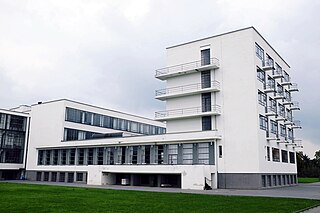
The New Objectivity is a name often given to the Modern architecture that emerged in Europe, primarily German-speaking Europe, in the 1920s and 30s. It is also frequently called Neues Bauen. The New Objectivity remodeled many German cities in this period.
Ernst Neufert was a German architect who is known as an assistant of Walter Gropius, as a teacher and member of various standardization organizations, and especially for his widely disseminated reference book Architects' data.
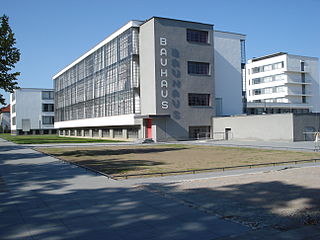
Bauhaus Dessau, also Bauhaus-Building Dessau, is a building-complex in Dessau-Roßlau. It is considered the pinnacle of pre-war modern design in Europe and originated out of the dissolution of the Weimar School and the move by local politicians to reconcile the city's industrial character with its cultural past.
Heinrich Brocksieper was a German photographer, experimental filmmaker and painter who was educated at the Bauhaus design school.

The Bauhaus Dessau Foundation is a nonprofit organization devoted to research and teaching in the field of experimental design. It was founded by the German Federal Government in 1994 and is based in the Bauhaus Dessau building in the state of Saxony-Anhalt. Its staff includes architects, town planners, sociologists, cultural scientists, artists, and art historians.

The Klassik Stiftung Weimar is one of the largest and most significant cultural institutions in Germany. It owns more than 20 museums, palaces, historic houses and parks, as well as literary and art collections, a number of which are World Heritage Sites.

Georg Muche was a German painter, printmaker, architect, author, and teacher.
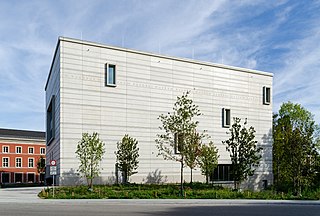
The Bauhaus Museum Weimar is a museum dedicated to the Bauhaus design movement located in Weimar, Germany. It presents the Weimar collections of the State Bauhaus, which was founded in the town in 1919. The museum is a project of the Klassik Stiftung Weimar and is located near the Weimarhallenpark. Originally opened in 1995, it is now housed in a new building since April 2019.

The ADGB Trade Union School, is a training centre complex in Bernau bei Berlin, Germany. It was built for the former General German Trade Union Federation, from 1928 to 1930. It is a textbook example of Bauhaus functionalist architecture, both in the finished product and in the analytical and collaborative approach used to develop the design and complete the project. Next to the Bauhaus Dessau building, it was the second-largest project ever undertaken by the Bauhaus.
Margaretha Reichardt, also known as Grete Reichardt, was a textile artist, weaver, and graphic designer from Erfurt, Germany. She was one of the most important designers to emerge from the Bauhaus design school's weaving workshop in Dessau, Germany. She spent most of her adult life running her own independent weaving workshop in Erfurt, which was under Nazi rule and then later part of communist East Germany.
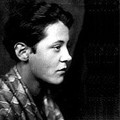
Alma Siedhoff-Buscher, born Alma Buscher, was a German designer. She trained at the Reimann School in Berlin, the Unterrichtsanstalt des Kunstgewerbemuseums Berlin and the Bauhaus.
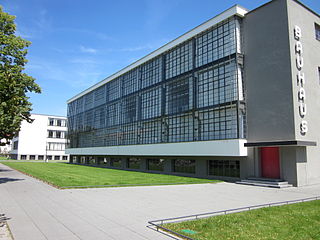
Bauhaus and its Sites in Weimar, Dessau and Bernau is a World Heritage Site in Germany, comprising six separate sites which are associated with the Bauhaus art school. It was designated in 1996 with four initial sites, and in 2017 two further sites were added.
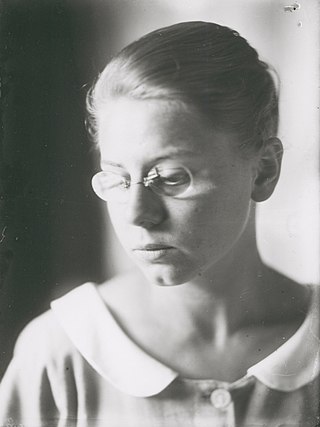
Lou Scheper-Berkenkamp née Hermine Luise Berkenkamp was a German painter, colour designer, the avant-garde author of children's books, fairy-tale illustrator and costume designer.

Benita Koch-Otte, born Benita Otte, was a German weaver and textile designer who trained at the Bauhaus.
Friedrich Konrad Püschel was a German architect, town planner and university professor who was educated at the Bauhaus design school. He worked in East Germany, the Soviet Union and North Korea.

Carl Fieger (1893–1960) was a German architect, designer, and teacher at the Bauhaus.




















